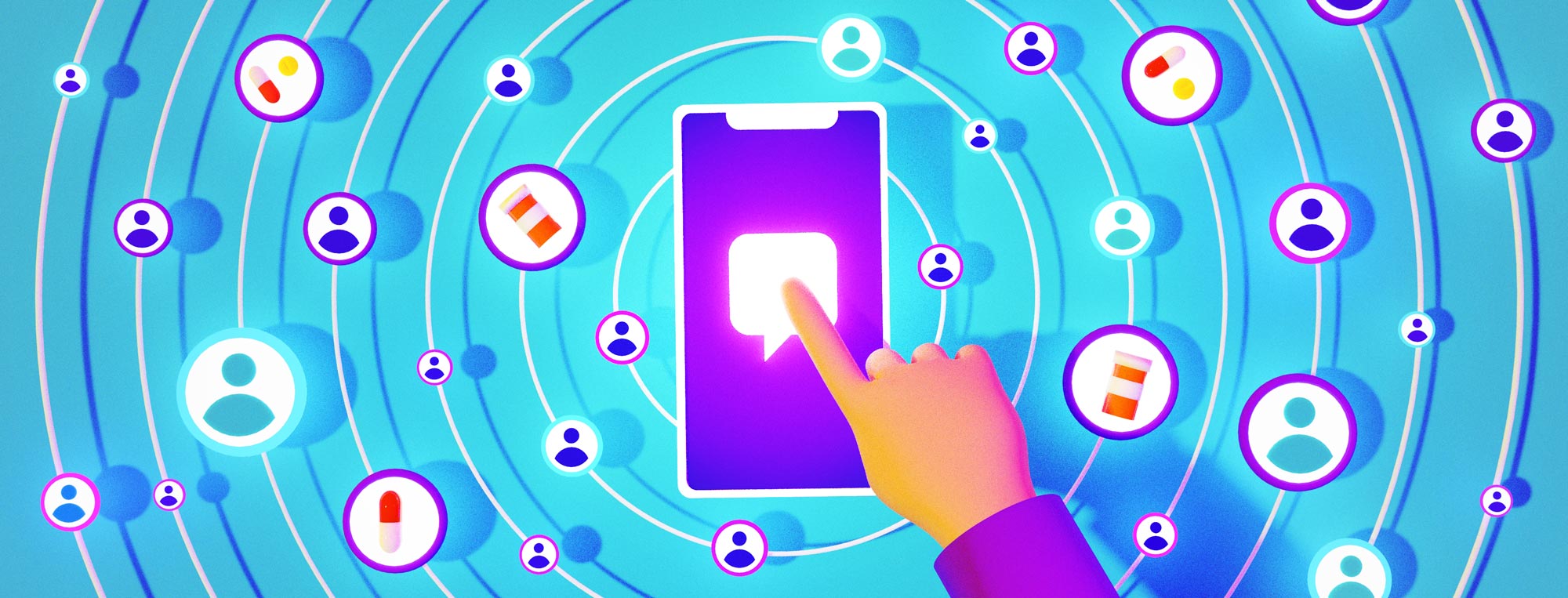Social Health: The Future of Healthcare Marketing
Published July 23rd, 2021 | 5 Minute Read
With advertisers preparing to spend up to $15 billion on influencer marketing by 2022, pharmaceutical and biotech companies are increasingly (and carefully) engaging trusted health social influencers to connect more authentically with consumers.
As pharma starts to leverage a multitude of high-engagement channels like influencer marketing, online communities and virtual health services, the industry finds itself in a unique position to reimagine traditional direct-to-consumer (DTC) efforts and peer-to-peer communication. That means going beyond TV ad celebrities or one-off Instagram relationships limited to short-term PR value.
When it comes to motivating consumers to take action with their health, and especially inspiring people to speak to a doctor, pharma needs to be thinking about new ways not just to reach patients but to activate them.
Enter social health
Social health—the digital means by which health consumers engage with each other and their health—has broad applications for the healthcare industry overall. When we think of social health, we might think solely of social media, but social health is bigger than that. It‘s the connection, community and socialization of patients across the entire social sphere, including communities, groups, messaging, video and audio.
Patients rely on social connection and online interaction to discover, connect, validate and share. According to research from WEGO Health, 79% of patients look to connect through various types of social media to find answers to questions about their own personal experiences. And after a doctor visit, 76% use social media to ask other people about their experiences with medication, conditions and diagnoses.
Related Articles
Redefining DTC Advertising: Capitalizing on a multi-dimensional, largely digital experience
The way people consume television – and advertising – is changing, quickly. When reaching people living with chronic health conditions, the complex and fragmented media landscape, along with fragmented attention spans, creates challenges for pharma marketers who are trying to drive awareness and interest in their brands.
Social health is a means for patients to access real-world patient experiences and peer-to-peer advice. It can serve as an important check and balance, filling in gaps after a TV ad campaign, a #sponsored Instagram story or an all-too-short physician interaction.
Patients trust other patients
The WEGO Health survey data shows only 14% of patients surveyed mostly or completely trust lifestyle influencers, versus 51% who mostly or completely trust patient health influencers. When it comes to branded pharma products, the survey was even more positive for patient health influencers: A total of 85% of patients said they would be somewhat or very receptive to an ad from a patient influencer promoting a drug related to the patient‘s condition.
Patients ranked online health publishers and patient online community leaders as their most trusted sources of health information, after medical professionals and healthcare systems. In fact, Health Union survey findings show that 87% of people living with chronic conditions who asked questions online were seeking input from other patients.
Patient communities play a critical role
Health Union has been building open, secure, online health communities for people living with chronic conditions for more than a decade. Online health communities are trusted sources by patients for information and connection, as well as for the support they need to take ownership of their health.
“When used consistently and skillfully, social support, adaptive engagement and active moderation provide a dynamic community experience for individuals with chronic health concerns, ultimately promoting better physical and mental health,” says Amrita Bhowmick, MPH, MBA, who is Health Union‘s chief community officer as well as an adjunct assistant professor at the University of North Carolina at Chapel Hill‘s Gillings School of Global Public Health.
By integrating multiple channels and building authentic relationships, advertisers can reach their audiences at key teachable moments in trustworthy online health communities, and also as they connect with patient health influencers. Jessica Botting, director of social media at leading life sciences marketing agency Klick Health, adds, “The most important thing is understanding patients’ journeys to their core, and evaluating how your brand can make meaningful connections at each stage of the journey.”
Putting the power of social health into practice
Online health communities and patient influencers, working in tandem, serve as a critical information and support system along every step of the patient journey. For pharmaceutical and healthcare marketers, patient communities, including their leaders and influencers, present a strategic opportunity to support a full-funnel marketing approach, and to put authenticity and transparency at the forefront.
With Health Union‘s recent acquisition of WEGO Health, the newly expanded team offers the depth and breadth across patient advocates, online communities and social avenues to offer brands a cohesive source for all of their patient-focused social marketing needs.
Reach out to the team today to discover solutions for your patient-centered marketing needs this brand planning season.
Related Articles
Redefining DTC Advertising: Capitalizing on a multi-dimensional, largely digital experience
The way people consume television – and advertising – is changing, quickly. When reaching people living with chronic health conditions, the complex and fragmented media landscape, along with fragmented attention spans, creates challenges for pharma marketers who are trying to drive awareness and interest in their brands.


